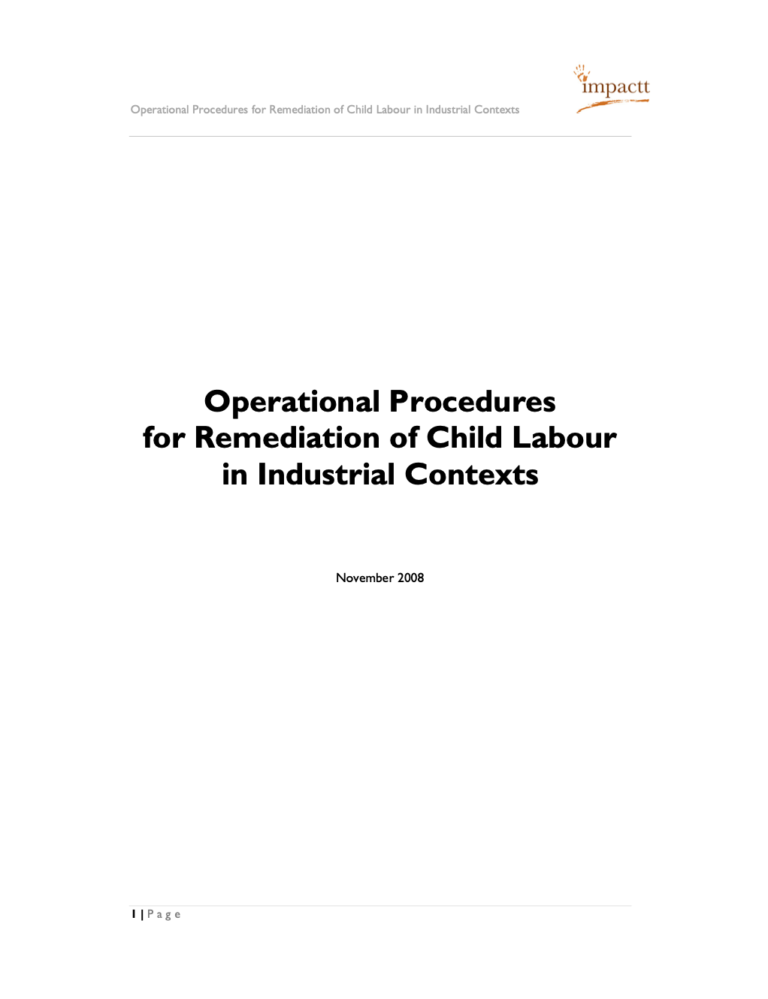Child labour is a complex and growing problem across global supply chains. Successful remediation is not easy to achieve and requires a holistic, multi-stakeholder approach. In every case, the interests of the child need to come first.
This document sets out operational procedures on how to deal with instances of child labour in the industrial context. These procedures are designed as a practical guide for purchasers, agents, factories, trade unions and NGOs who may be involved in child labour remediation. They are based on Impactt’s experience of working with stakeholders on child labour remediation and prevention programmes around the world and on a consultation involving 90 practitioners around the world. This document does not set out to tackle the root causes of child labour, but rather to provide support on dealing with individual instances as and when they are discovered and tackling some of the most common difficulties.
It is important to note that those involved in child labour remediation must have suitable skills and experience of working with children and should have a CRB (Criminal Record Bureau) check in the UK or its equivalent in other countries.

